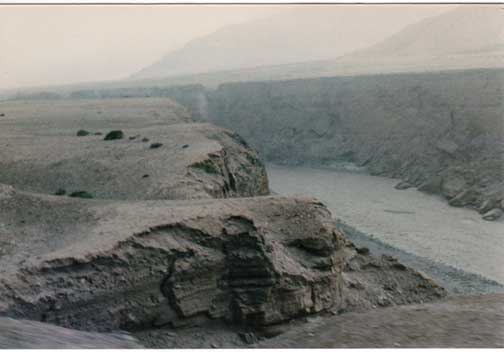
The Global and Mail May 28, 2001
BEIJING -- The rail cars will trundle across the Tibetan plateau at heights soaring to five kilometres, where the air is so thin that first-class passengers will have access to oxygen bars and doctors versed in cures for altitude sickness.
Those in the cheaper, harder seats will have no respite from the headaches and nausea. That will just be part of the ride to the top of the world on the planet's highest railway, 1,118 kilometres of steel track built into the mountainsides and valleys of the Himalayas.
After 50 years of dreaming, China's state planners are almost ready to start building the $4-billion megaproject, intended to provide easy access to the mountain region for the country's 1.2 billion people. The symbolism is simple: Linking Tibet to the main railway network will draw it that much closer to China.
"A big part of this is political," a Chinese researcher said. "Tibet is the only province without a railway. Now, Tibet will be like all the other provinces, and the government is showing it will spend money to improve life for Tibetans. It also means there will be more Chinese settling in Tibet -- and soldiers, if that is also necessary."
The Free Tibet movement seemed to score political points last week when its exiled spiritual leader, the Dalai Lama, met with U.S. President George W. Bush. The meeting was significant in that it was the 50th anniversary of China's takeover of Tibet.
But the reality is that Beijing's influence in Tibet grows stronger by the day, and many Tibetans worry that their homeland will be flooded with even more Han Chinese.
China's central planners are looking to the huge rail project, which will link the Tibetan capital, Lhasa, and the town of Golmud in the neighbouring province of Qinghai, to help undercut separatist elements in Tibet and integrate Tibetans into the country's economic and political systems.
The project, which could begin this year, is slated for completion about 2006. Most observers predict that, in the early stages at least, it will make little economic sense. They say it will need major subsidies to keep running.
But Beijing views it as crucial to nation-building. In addition to carrying in more Han Chinese, sources say, China's leaders hope the rail line will boost the tourist industry in Tibet and deliver cheap coal to build local industries.
Central planners hope it will make extraction of minerals from Tibet more economic, which could lead to despoliation of the pristine environment.
The railway project was recently listed in Beijing's five-year plan, meaning the Politburo has made its completion a top priority. President Jiang Zemin and Premier Zhu Rongji, septuagenarians who believe in Chairman Mao's dream of uniting Tibet with China, hope to make the project part of their political legacy when they leave office in the next 18 months.
"The Chinese authorities have really consolidated their control of Tibetan areas," said Kate Saunders, a spokeswoman for the Tibet Information Network, which campaigns for the region's independence. "Tibetans are extremely worried that this railway will really be the final push by China."
Tibetans fear repetition of a well-known pattern in China's remote areas: Each new railway brings tens of thousands of Chinese migrant workers and traders. Tibet's Buddhists, who have endured the killing and persecution of monks and separatist leaders over the past few decades, fear the influx could swamp their culture.
>From 1990 to 2000, Tibet's population of Han Chinese more than doubled, to 205,000. Tibetans still represent more than 90 per cent of the 2.6 million people in the region, but 80 per cent of them are in the countryside; Chinese influence in urban areas is significantly larger.
Ms. Saunders said Beijing may have to seek foreign expertise for the railway, which will be one of the most technically challenging ever attempted. But she said the Politburo is committed to putting up the money to finish the project.
China's railway engineers estimate they can finish the project within six years. But they acknowledge they face formidable engineering challenges.
Officials quoted in yesterday's South China Morning Post said the challenges could force them to delay the project's start until early next year.
Aside from the extreme altitude, which will mean engineers must design diesel locomotives to compensate for air that has up to 45 per cent less oxygen, planners face the challenges of permafrost.
About 550 kilometres of the railway will be built on what the Chinese call frozen earth, similar to the tundra that bedevils construction in northern Canada. But the engineers say they have developed techniques that will eliminate the danger of the land heating up from the railway. Otherwise, there could be landslides, or the track could sink into melted permafrost. They also promise to build passageways for wildlife to cross the tracks.
Tibetan exiles aren't buying the promises. "The proposed Lhasa-Golmud railway line will mean that more Chinese settlers will swamp Tibet, and Tibet's untapped natural resources will find their way to China," T. C. Tethon, a member of Tibet's government-in-exile in India, said recently. "The decision to construct the line . . . has a strong political and military objective of cementing Chinese rule over the Tibetan plateau."